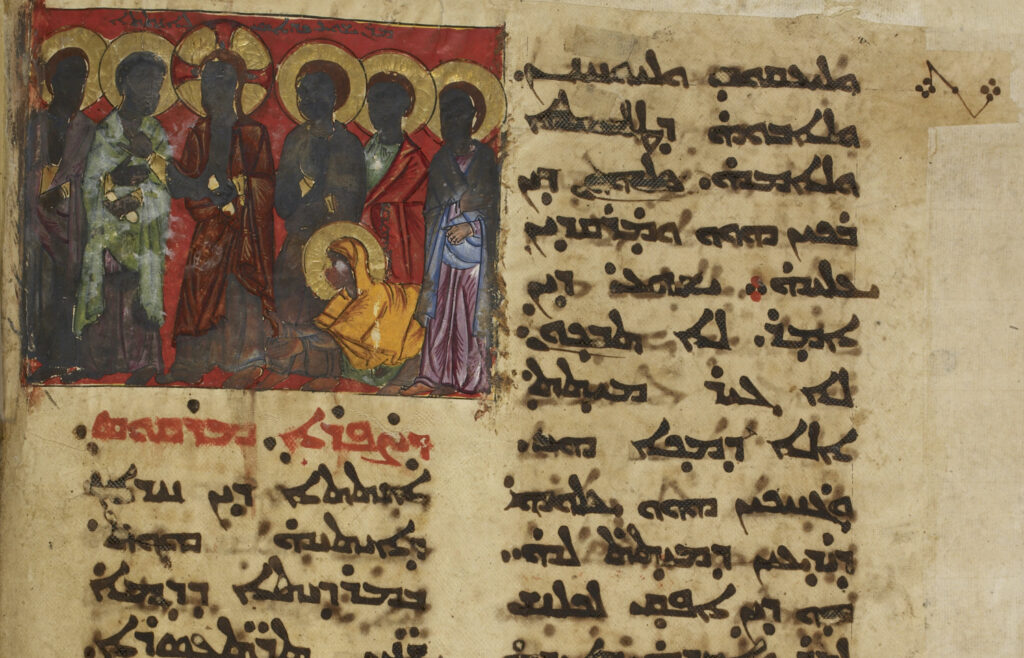A new study has revealed that the unsung scribes and editors of Syriac Christian manuscripts played a far greater role in shaping literary culture than previously recognised. By using digital tools to examine nearly 1,000 Syriac manuscripts from the British Library, researcher Noam Maeir has uncovered how the practice of excerpting—selecting and rearranging textual passages—became a powerful editorial tool over the centuries.
Published in PLOS One, the study introduces a novel metric called ‘Excerpts Per Manuscript (EPM)’, designed to measure the frequency of these non-authorial interventions. Drawing from nearly 20,000 excerpted passages tagged in the digitised catalogue, Maeir’s research repositions scribes not as passive transmitters of ancient texts but as active agents who curated, compiled, and reshaped knowledge for new audiences.
“Rather than viewing these manuscripts solely as vessels for preserving ancient texts, this study treats them as cultural objects in their own right—ones that reflect editorial choices, intellectual trends, and changing modes of organizing knowledge,” Maeir explains in the article.
The findings show that while most manuscripts contain only a handful of excerpts (fewer than 20), a small but significant group—created mostly between the 6th and 9th centuries CE—includes hundreds or even over a thousand excerpts. These “high-EPM” manuscripts span multiple genres, including theology, liturgy, and historiography, and demonstrate how widespread and culturally important excerpting became in Syriac literary production.
One such manuscript, British Library Add. 12155, contains over 1,100 excerpts, making it a standout example of intensive editorial activity. Maeir likens these manuscripts to “mountain peaks” in the topography of Syriac literature, describing them as “rich repositories of non-authorial literary practices” that may serve as “major sites or intersections of Syriac literary culture.”
The research also engages with the field of material philology, which emphasises the manuscript as a crafted object rather than merely a container for texts. This approach draws attention to scribes, compilers, and readers—those who actively shaped manuscripts through decisions about layout, selection, and commentary.
To carry out this study, Maeir utilised the digitised version of William Wright’s 19th-century catalog of Syriac manuscripts, which has been restructured by Syriaca.org. By tagging and extracting metadata related to excerpts, Maeir was able to apply computational methods such as distant reading, a technique from the digital humanities that allows for broad patterns to emerge from large datasets.
Maeir notes that the traditional author-focused cataloguing systems often obscure the contributions of scribes and editors. “The redescription, the quantitative charting, reveals, simply, that there is a large group of manuscripts characterized by low EPMs, and a very small group that share a much higher EPM,” the study observes. This small group, it argues, deserves renewed attention for the intellectual labour it represents.
The research was conducted at the Digital Humanities Center at the Hebrew University of Jerusalem, where Dr. Maeir is a postdoctoral fellow under the supervision of Renana Keydar. The centre, established four years ago, provides computational support for humanities scholars and promotes interdisciplinary approaches to historical research.
By highlighting the editorial choices made by Syriac scribes, Maeir’s study not only redefines the landscape of Syriac manuscript culture but also invites a reassessment of how we understand authorship, knowledge transmission, and the collaborative nature of historical writing.
For scholars of late antiquity and medieval Christianity, this research opens new doors—encouraging a deeper look at the manuscripts not just for what they preserve, but for how they were made.
The article, “Material philology and Syriac excerpting practices: A computational-quantitative study of the digitized catalog of the Syriac manuscripts in the British Library,” by Noam Maeir, appears in PLOS One. Click here to read it.
Top Image: British Library MS Add. 7170 fol. 83v
Subscribe to Medievalverse
Premium IPTV Experience with line4k
Experience the ultimate entertainment with our premium IPTV service. Watch your favorite channels, movies, and sports events in stunning 4K quality. Enjoy seamless streaming with zero buffering and access to over 10,000+ channels worldwide.

















